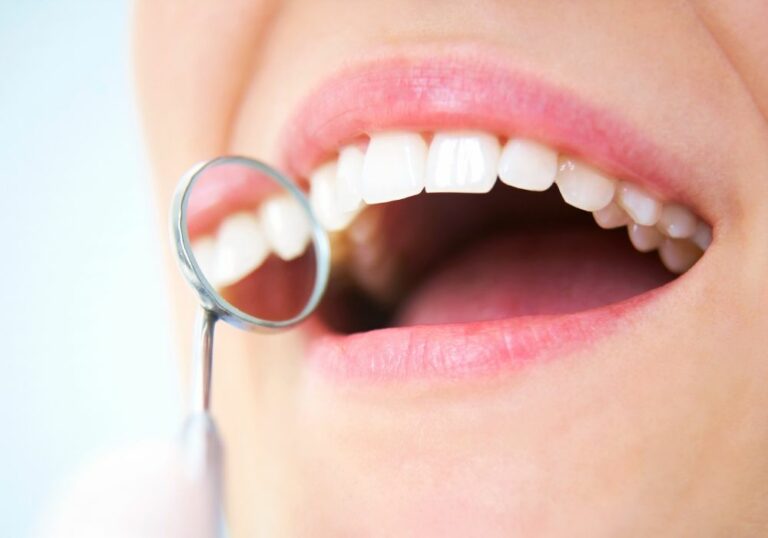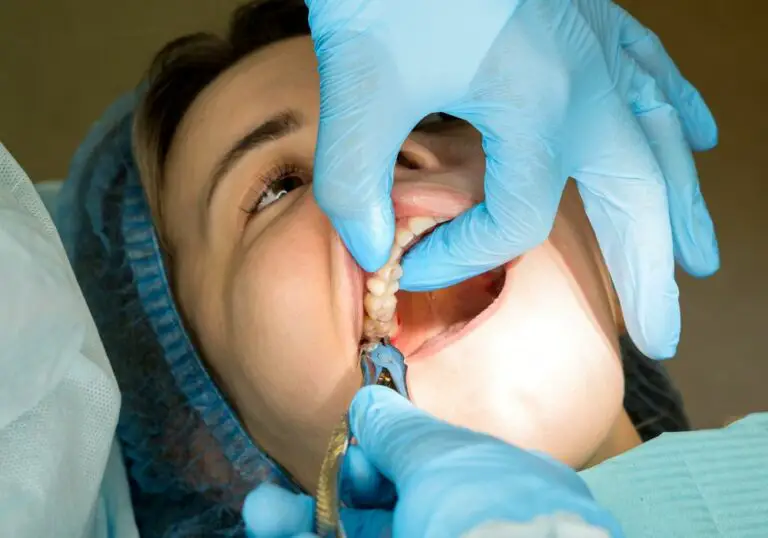Pacifiers are commonly used to soothe infants and toddlers. However, prolonged pacifier use past age 3 can cause various orthodontic issues like open bite, crossbite, overjet and crooked teeth. Many parents wonder if braces can resolve problems associated with overuse of pacifiers. This detailed guide examines how pacifiers affect dental development, which specific issues braces can fix, types of treatment, and how to get the best orthodontic outcomes.
Dental Effects of Prolonged Pacifier Use
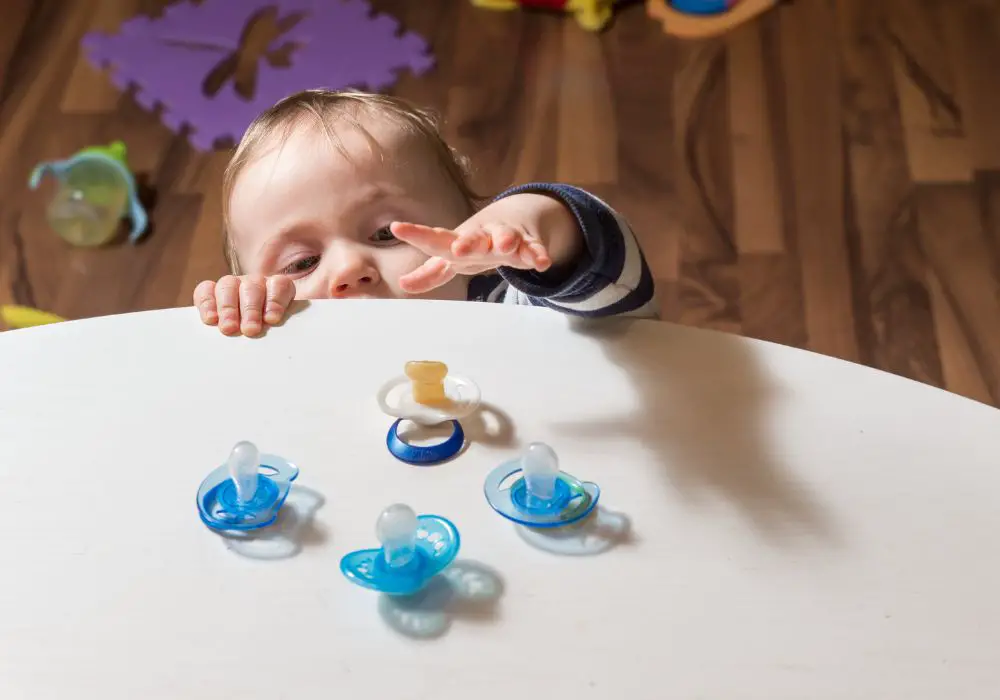
While pacifiers are fine for babies, excessive, forceful sucking beyond toddler years can impact growing teeth.
How Pacifiers Affect Teeth Position
The nipple of the pacifier exerts pressure on the teeth as the child sucks. This can gradually push the teeth outward or inward from their proper positions in the following ways:
- Open bite: Pacifiers can encourage an open bite, which is lack of vertical overlap between upper and lower incisors. The sucking action brings the front teeth slightly forward and outward.
- Crossbite: Using a pacifier consistently on one side can shift teeth into a unilateral posterior or anterior crossbite. This is when top teeth get pushed inside bottom teeth on one side.
- Overjet: Excessive overjet (greater than 3 mm) occurs as the pacifier brings upper incisors farther forward of the lowers. This extends the horizontal overlap.
- Crowding: Teeth may become overlapped as pacifier sucking narrows the jaw. This causes crooked, twisted or crowded teeth due to inadequate space.
- Gapping: Along with crowding, gaps may form between the teeth as their positions are shifted. Spaces also emerge once pacifier use stops.
- Protrusion: Upper and sometimes lower incisors are pushed unnaturally forward and outward from the jaw, known as protrusion or flaring.
- Posterior crossbite: Upper back teeth may bite inside lower teeth, called a posterior crossbite due to inhibited transverse jaw growth.
Effects on Jaw Growth and Muscle Activity
Besides positioning teeth incorrectly, long-term pacifier use also impacts optimal jaw growth and muscle function needed for proper bite alignment. This can cause:
- Tongue thrusting: Pacifiers teach incorrect tongue thrusting instead of proper suckling motion. Persistent tongue thrusting affects swallowing and speech.
- Constricted palate: Excessive downward pressure on the roof of the mouth from sucking limits proper growth of the dental palate.
- Class II malocclusion: With upper jaw pushed outward and lower jaw recessed, a Class II malocclusion often develops. This deep overbite is hard to correct later.
- Bruxism: Some children grind their teeth subconsciously to counteract forces from pacifier sucking.
- TMJ disorders: Jaw misalignment from pacifiers can lead to painful TMD problems involving the temporomandibular joint.
- Sleep apnea: Narrowed dental arches from pacifiers are associated with higher sleep apnea risk.
Airway, Speech and Oral Hygiene Considerations
Airway function, speech development and oral hygiene may also be impacted by long-term pacifier use:
- Mouth breathing/snoring: Constricted airways are linked to chronic mouth breathing and snoring.
- Speech issues: Dental gaping can cause frontal lisping, unclear speech or other articulation problems.
- Increased decay: Open bites allow food to pack between teeth, increasing decay risk.
- Gum disease: Too much gapping lessens proper cleaning of gumlines, raising likelihood of gingivitis.
Factors That Increase Risk of Orthodontic Issues
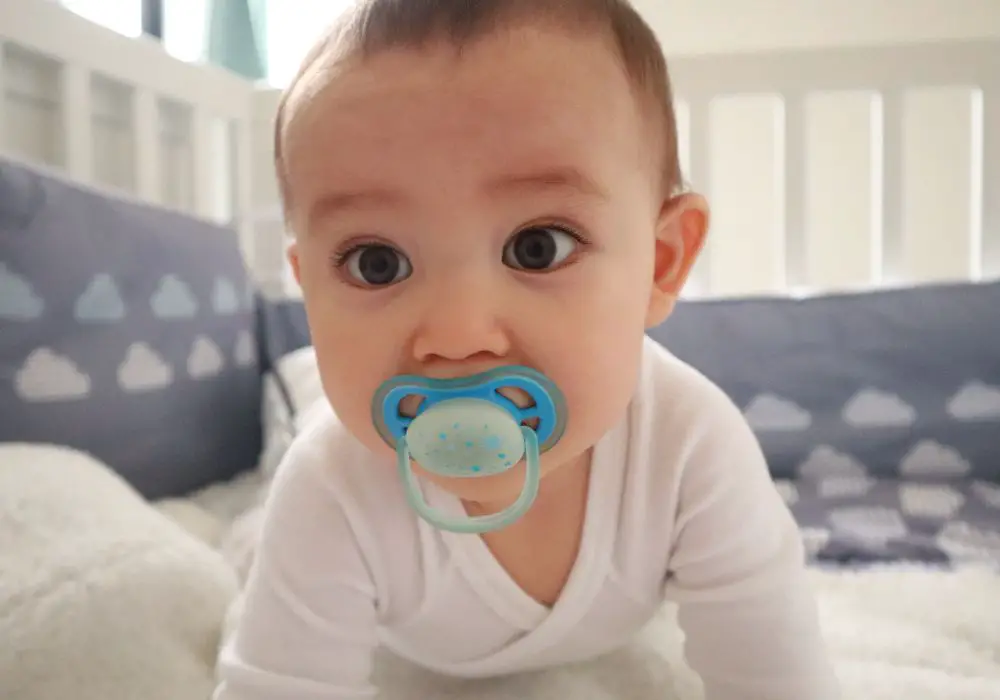
Not all children who use pacifiers past infancy will definitely develop bite problems. But these factors make negative effects more likely:
- Pacifier use exceeding 3 years of age
- Sucking pacifier throughout the day rather than just for naps/nighttime
- Using small, hard pacifiers or those with rounded nipples
- Combining pacifier with finger/thumb sucking habits
- Genetic predisposition for crowded or poorly positioned teeth
- An underlying skeletal jaw imbalance or malocclusion
- Congenitally missing teeth or other genetic dental anomalies
- Environmental factors like mouth breathing that exacerbate problems
Can Braces Correct Pacifier-Related Issues?
Yes, dental braces have proven highly effective for realigning teeth affected by prolonged pacifier use.
Orthodontic braces apply gentle pressure to the teeth and jawbones over time to shift them into proper anatomical alignment. This is achieved by:
- Metal, ceramic or plastic brackets bonded directly to problem teeth
- Wires threaded through brackets to connect teeth
- Ties or elastic bands securing the archwires to exert forces as needed
- Incremental archwire changes and adjustments moving teeth until correction goals are met
Some common orthodontic issues related to pacifiers that braces can resolve include:
- Open bites – Bringing incisors together vertically
- Crossbites – Correcting inside-out overlap of top and bottom teeth
- Overjets – Retracting excessively protruded incisors
- Crowding – Uprighting and spacing teeth properly
- Gapping – Bringing teeth together by closing spaces
- Misaligned jawbones – Realigning upper and/or lower arches
Customized braces treatment, sometimes along with auxiliary appliances, works to bring all aspects of the bite into harmony.
Various Types of Contemporary Braces
Today’s orthodontists can choose from different appliance options to best suit each patient’s specific case and lifestyle. Common modern orthodontic braces types include:
- Metal braces – Stainless steel remains the standard, utilizing brackets, bands and archwires to reposition teeth.
- Ceramic braces – More aesthetic, tooth-colored ceramic or plastic brackets substitute for metal ones.
- Clear aligners – Popular removable aligners like Invisalign® correct mild crowding and spacing without wires.
- Gold braces – Gold plated brackets offer an alternative aesthetic look to silver metal.
- Lingual braces – Brackets bonded to the backs of teeth hide appliances from view.
- Self-ligating braces – Brackets with sliding doors allow faster archwire changes with no ties.
- Retainers – Used both to hold teeth in new positions after braces or alone for minor corrections.
An orthodontist examines each case carefully and recommends which brace option will work optimally. Heavier types of braces are required for moderate to severe pacifier-related misalignments.
Ideal Age for Corrective Orthodontic Treatment

The recommended age to begin treatment for bite issues associated with pacifier use is:
- Orthodontic evaluation by age 7
- Begin brace treatment between ages 8-10 if indicated
Early intervention when the head and facial bones are still maturing allows for the following benefits:
- Quicker correction: Less movement needed than realigning fully displaced adult teeth.
- Lower relapse tendency: Teeth more easily stay in corrected positions when treated young.
- Enhanced self-esteem: Eliminates years of feeling self-conscious about a problem smile.
- Better jaw growth: Normalizing early muscle function allows proper maturation of facial bones.
- Improved oral function: Corrects bite issues to enhance chewing, swallowing and speech.
- Shorter Phase 2 treatment: Decreases need for follow-up orthodontia when growth is done.
Early treatment results in healthier bites free of problems like TMJ disorders, sleep apnea and periodontal disease later in life.
Overview of the Braces Process
Here’s an overview of the phases of treatment when correcting pacifier-related orthodontic issues with braces:
Orthodontic Records
The first step is to have a complete orthodontic workup done:
- Photos taken from various angles
- Digital scan for 3D model of the teeth and jaws
- X-rays to see roots, jawbones, unerupted teeth
- Impressions for plaster study models
- Documentation of bite alignment
- Evaluation for oral hygiene and decay
These diagnostic records are used for creating a tailored braces treatment plan.
Braces Bonding Appointment
At bracket placement visit, the orthodontist will:
- Thoroughly clean and etch teeth to roughen enamel
- Apply adhesive and attach custom brackets to each tooth
- Insert the initial archwire through bracket slots
- Use ties or o-rings to secure wire in place
- Trim any irritating wire ends
- Check for sore spots on cheeks, lips and gums
There may be some discomfort for a few days following braces placement. Over-the-counter pain medication can help relieve soreness.
Orthodontic Adjustments
Every 4-8 weeks, the patient returns for wire changes and adjustments to continue the teeth moving sequence:
- Older archwires are removed and newer ones put in
- New rubber bands or headgear may be given if necessary
- Tightening is done to advance the incremental movement
- Replacing any loosened or broken brackets
Some sensitivity is common for a few days after each adjustment. Using orthodontic wax and rinsing with salt water helps reduce irritation.
Braces Removal
Once the orthodontist confirms all treatment goals are met, braces are debonded:
- Each bracket is detached from the teeth
- Stubborn glue remnants are removed
- Teeth are smoothed and polished
A custom retainer is placed to start the retention phase next.
Retention Protocol Following Braces
Retaining corrected tooth positions is crucial after braces are removed. Supportive retention involves:
- Wearing a retainer full-time up to 23 hours per day initially, for about 6 months
- Gradually tapering down to nighttime-only wear (10-12 hours) by 1 year post-braces
- Consistent overnight retainer use for several years as the bones and gums still mature
- Possible permanent bonded retainer behind lower front teeth
- Annual dental checkups to ensure teeth are stable
Using retainers exactly as prescribed prevents teeth from shifting back after all the hard work of braces. Compliance is key during the retention phase.
Maintaining Excellent Orthodontic Outcomes
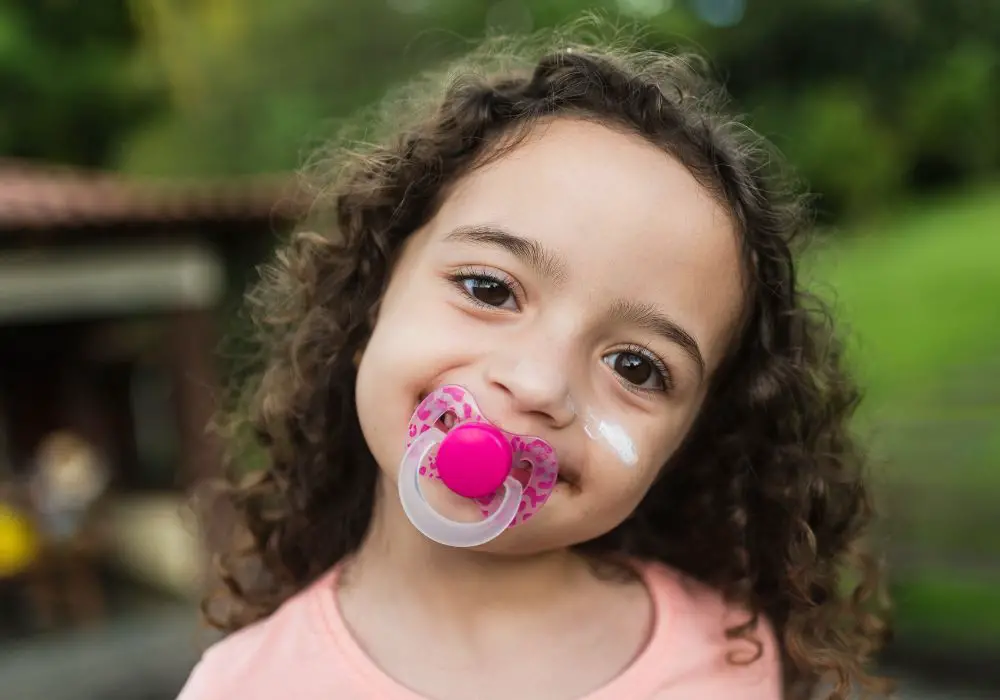
To sustain straight, properly aligned teeth after braces long-term:
Proper Oral Hygiene
- Effective brushing twice daily plus flossing and rinsing
- Careful cleaning around braces with specialized tools
- Avoiding staining foods/drinks
- Regular dental cleanings every 6 months
Follow-Up Orthodontic Care
- Wearing retainers full-time initially, then nightly per schedule
- Replacing lost or broken retainers immediately
- Attending all follow-up appointments as scheduled
- Possibly needing refinement braces later during maturation
- Watching for any teeth shifting and addressing it early
Proper oral hygiene and retention compliance after treatment ensures the best prognosis.
Using Habit Appliances with Braces
For children still actively using a pacifier when braces are initiated, the orthodontist may recommend simultaneous habit appliances.
These temporarily make pacifier sucking uncomfortable so the child is encouraged to cease the habit while teeth are realigned. Used along with braces for just a few weeks, types include:
- Palatal crib – Grid placed behind front teeth obstructs sucking motions
- Spurs – Small protrusions on inner upper teeth bother tongue during sucking
- Palatal bar – Bar fixed behind incisors hinders pacifier use
- Lip bumper – Discourages sucking behaviors and tongue thrusting
Once the habit is broken, the appliance is removed. The teeth then remain aligned without the counteracting forces.
Non-Orthodontic Options
In mild cases of dental misalignment from pacifiers, options other than braces may be viable:
- Clear aligners can remedy limited crowding or spacing in children.
- Retainers can covertly straighten slightly crooked front teeth.
- Composite bonding applies tooth-colored material to edges of teeth to close small gaps.
- Porcelain veneers mask protruded or irregular teeth by reshaping their appearance.
However, more significant orthodontic issues like crossbites, overjets beyond 3 mm, or major crowding will likely require braces and expanded treatment for full correction. An orthodontic evaluation is needed to determine appropriate interventions.
Possible Problems Without Early Treatment
Left untreated, progressive issues can develop from prolonged pacifier use:
- Severe malocclusion needing oral surgery or extractions later
- Impacted canines and wisdom teeth due to inadequate eruption space
- Progressive gum disease and tooth decay complications
- Worsening TMJ disorders leading to impaired jaw function
- Permanent speech deficits due to gaping
- Psychological effects like poor self-image and social inhibition
The American Association of Orthodontists strongly recommends early evaluation and correction to avoid escalating problems.
When To Seek An Orthodontic Assessment
The American Dental Association advises:
- Age 1: First checkup to monitor dental and jaw growth
- Age 3-4: Visit a pediatric dentist if pacifier use exceeds 3 years old
- Age 7: Evaluation with orthodontist for any problems detected
- Age 8-10: Early brace treatment if bite issues are identified
Seeking orthodontic guidance by age 7 allows emerging problems to be intercepted before they worsen. Early intervention with braces offers optimal outcomes.
Conclusion
While pacifiers are common infant soothers, overuse beyond age 3 can cause lasting orthodontic problems if left untreated. But when addressed early, braces are an effective solution to realigning teeth affected by prolonged pacifier use. Wearing retainers after braces helps maintain the corrected position long-term. Combining braces and habit appliances encourages lasting results. Through proactive orthodontic treatment, children can overcome dental issues linked to excessive pacifier use and achieve healthy, beautiful smiles.
Frequently Asked Questions
Should I wait until all baby teeth fall out to fix pacifier problems?
No, delaying treatment allows alignment problems to worsen over time as the permanent teeth erupt. Early intervention with braces while the head and jaws are still developing leads to faster correction and better outcomes long-term.
Will dental insurance cover braces for pacifier-related issues?
In many cases, yes. Medically necessary orthodontic treatment like correcting crossbites or overjets beyond 3 mm is often covered by dental insurance. Some cosmetic issues may not be covered depending on the plan. Verify coverage specifics with your insurance provider.
What happens if I don’t correct my child’s pacifier teeth during early childhood?
Postponing treatment allows the problems to become much more complex as the teeth and jaws continue growing. Severe misalignment may eventually require extracting permanent teeth or extensive oral surgery to realign the bite. Early intervention with braces provides simpler, non-invasive correction.
Can pacifier-related overbites be fixed without braces?
Limited overbites may be partially treatable with clear aligners or other subtle methods. But moderate to severe overbites usually require several years of traditional braces to appropriately reposition the teeth and realign the bite. An orthodontist can recommend appropriate options after thoroughly evaluating the bite.
How can I reduce the risk of pacifier teeth problems?
Restrict pacifier use to naps and bedtime by age 2-3. Choose an orthodontic pacifier and avoid letting it stay in continuously day and night. Cease pacifier use altogether by age 3 if possible. Limit finger or thumb sucking too. Follow up with early orthodontic checkups to catch problems before they worsen.




